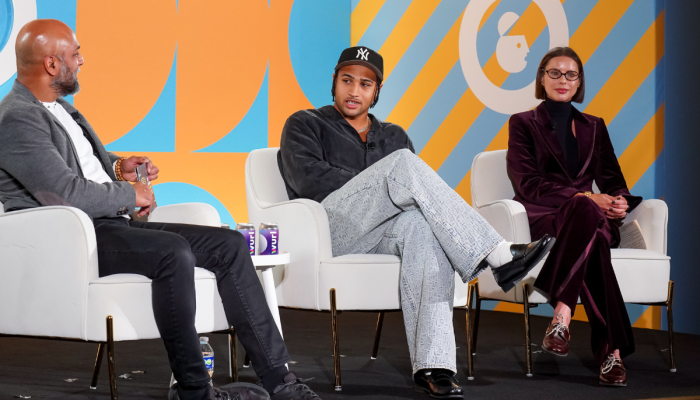COVID-19 has done some interesting things to women’s minds and decision-making. As both a researcher and one tired Mom: I know. Can marketers respond? Of course. But it’s time for them to ask a whole new breed of questions.
Recently, while juggling my chaos of obligations in the same living/working/learning space as my husband and children, I thought of all the women in my life. And I concluded we’re an efficient bunch. Not long ago, we were Olympic-level multitaskers and decision-makers. We developed our ideas and acted on them quickly. We prided ourselves on our ability to move fast, to get things done. It wasn’t always pretty—but it all happened.
COVID-19 changed all that.
Remember snap decisions? Gone. Remember when you could remember everything you needed at the store? MIA. Remember when you could learn something and it could, for lack of a better phrase, stay learned? On hiatus. In my field, we study cognitive loads: daily demands on the brain’s resources. Everyone carries them, but women—responsible for most purchase decisions—have reached a threshold. It’s too much, and we’re ready for brands to understand.
The reality of “COVID brain”
When I felt my own efficiencies slipping, I reached out to an eclectic group of female friends—a principal, a lawyer, two stay-at-home Moms, a teacher, a writer, an HR exec, two small business owners and a professor—and quickly discovered I was not alone. We all felt like we were losing “it,” that magic ability to be the one who always stays on top of everything, including making quick, clear-eyed choices. And we identified three reasons why.
1. Our auto-pilot mode has switched to manual
With COVID-19 (literally) in the air, no decision feels straightforward. Even the once-simplest choices, like how closely to pass a neighbour and their child on the sidewalk, now require crunching through a series of questions: Is it safe? If we step away from them, is that rude? If we pass too closely, will they think we don’t care?
Going anywhere requires wondering if it’s crowded, if it will be sanitary, and if everyone will wear a mask. Staying home brings no relief, either. Should I wait to handle that package that just arrived? How long should I wash this lettuce?
2. We’re carrying our kids’ cognitive loads, too
Any other year, our children would have outlets like friends, team sports and school relationships. But during COVID-19, Mom has to serve as playdate, teacher, and source of all physical/emotional connection. We get to work overtime identifying our kids’ needs when they’re not mature enough to name them yet. Let’s not even address the guilt we feel when our obligations as wage-earners intrude, or we can’t recreate school at home with endless (and expensive) technology and bandwidth.
Bigger questions also weigh on our minds. What will the long-term effects of this be on my child, from the social isolation to all this screen time? How will this affect their educational progress? Their social-emotional development? Have I done enough? Will they be OK?
3. Our struggle seems invisible
God bless the companies that figured out how to offer home delivery and other conveniences. But not everyone can afford to buy their way out of COVID-19 stresses, and even those that can don’t feel like brands fully grasp the moment.
Even as we go through this unprecedented experience, women see the same products and weirdly, the same types of advertising. The way brands paint us used to be flattering. Look at these tireless Moms, they never miss a beat no matter what the day throws at them! Right now, that representation doesn’t hit us as aspirational. It makes us tired. It feels impossible.
This is a moment to engage and aid us, directly. But most brands don’t even seem to see us.
How slowed thinking changes decision-making
Earlier in 2020, many consumers experimented with new brands. All kinds of factors motivated these trials: lack of availability and/or belt-tightening, but also openness to indulging curiosities during a disruptive period we all assumed would be over soon.
But with COVID-19 going nowhere fast, my friends and I find ourselves gravitating back to old “favourites,” whether those brands excite us or not, because we just want fewer questions cluttering our brains. This choosing-to-not-choose even extends to our fashion choices. I have ordered these shapeless, comfortable sweats in under 6 minutes. I am victorious.
More unnerving than the decisions we can possibly explain are those we can’t. Sure, it makes sense to put off planning a vacation. We may have to cancel. But why does that fact make us so slow to identify where we’d even like to go? What’s happened to our brains? Where the Hell is autopilot, and when’s she coming back?
What do women want? Empathy in action
Emotionally, women have always embraced brands that make our lives easier, simpler, more efficient. But all that means something very different right now. Women’s go-to mental systems being in absentia, we need brands to help us work with what we’ve got. It’s time for them to ask a lot more questions so women can be relieved of a few.
How is COVID Brain, with all its micro-moments of thought and delay, shaping new behaviours as I write this? We know women’s minds are abandoning tasks in search of relief, so it would behove more brands to investigate. What once felt important to women that no longer does? What decisions do we now avoid or skip? Why?
While segmentation hasn’t been just about demographics and income levels in a long time, it is now more fractured and nuanced than ever before. Maybe it’s time to slice and dice data along our comfort lines for risk-taking, or how far we’ve strayed from well-trod consumer journeys (analogue and digital). Could new marketing touchpoints give women back some of that sweet autopilot feeling? Of course. But until brands determine what’s really going on, they can’t begin designing the new products, delivery systems or supports that will actually meet the need.
I started out thinking I shouldn’t write this if I didn’t have the answers. But speaking as a Mom, we’re tired of having to solve it all—and under COVID-19, we’re tapped out. So brands, be aware: whatever decision matrix you’re working with for women no longer applies. Research and market accordingly.
By Katie Buckley, Managing Partner at Basis Research



